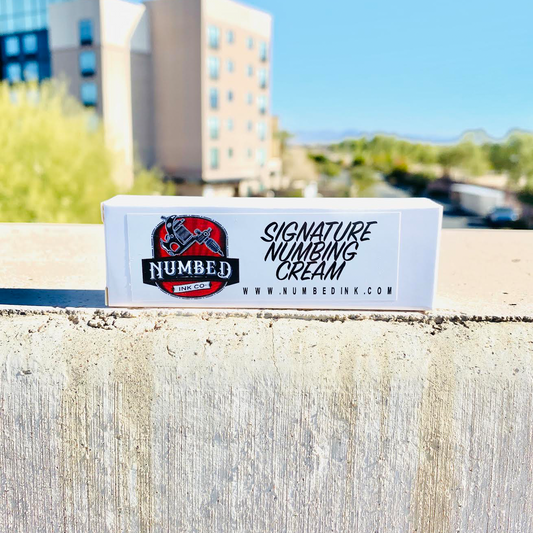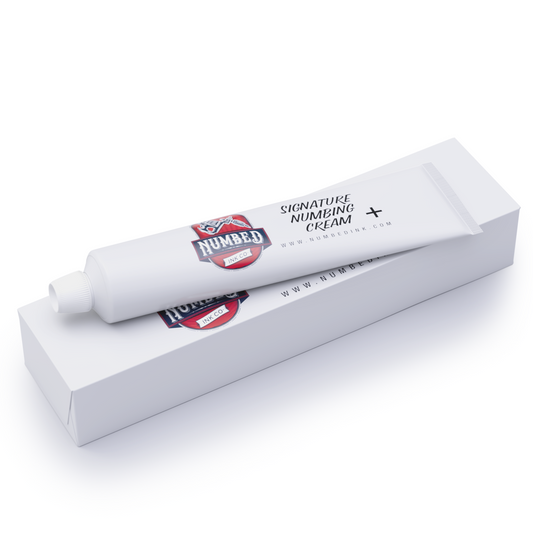Forearm tattoos are wildly popular for newbies and enthusiasts alike. They’re stylish, easy to show off (and hide if necessary), and one of the least painful areas of your body to have tattooed.
And if you’ve recently decided to add some fresh ink to your forearm or are preparing to do so, it’s important to develop a healthy aftercare routine to protect both your skin & new ink.
Proper aftercare for your forearm tattoo
You’ve just put a great deal of your time, money, and consideration into your new forearm tattoo – now it’s time to take care of it. Because it’s a fresh wound, you must treat your new ink with great care to protect your skin and ensure the longevity of the tattoo.
To do so, be sure to properly care for the wound, avoid common sources of bacteria (swimming, sunlight, sweat, etc.), and monitor for any signs of an infection.
But before we get into how to properly care for and preserve a forearm tattoo, let’s cover some basics.
What to do after you get a forearm tattoo?
When you get home
Though forearms are one of the least painful body parts to get tattooed, you’re still going to be in a decent amount of pain when you leave the shop.
As soon as you get home, grab a small bag of ice or an ice pack and apply to the area to reduce pain and inflammation. The area should be covered with plastic wrap, so place a thin towel between the ice and the wrap to avoid soaking the wrap and getting water on your new tattoo.
For the next few hours, just relax – your body needs to begin the healing process. Watch TV, scroll on your phone (with your other hand), and avoid any strenuous activity that involves your forearms (like video games or typing on a keyboard).
How to clean a forearm tattoo
Cleaning is one of the most important aspects of tattoo aftercare. It prevents infections from forming, ensuring that your tattoo heals properly and maintains its fresh look.
To properly clean your tattoo, wash your forearm 3-4x per day with warm, soapy water for at least 20-30 seconds using your fingers (make sure to wash your hands before touching the area). Additionally, be sure to wash the area if it’s exposed to bacteria after working, exercising, or another activity.
If you choose to wash your forearm tattoo in the shower, follow the same process. Just be sure to opt for a slightly cooler temperature for the remainder of your shower to avoid burning your skin and irritating the area.
After you’ve finished cleaning the ink, gently dry your skin by patting the area with a disposable paper towel or antimicrobial cloth.
It’s best to use a clean, disposable towel to dry the area as cotton hand & body towels – especially if shared with others – can harbor bacteria, exposing you to a potential skin infection.
Which kind of soap should I use to clean the tattoo?
With so many options in the soap & personal care aisle, it’s easy to feel overwhelmed when shopping for the right soap. Try to ignore all of the fun-smelling scents and choose a fragrance-free, liquid, pump soap. Because they lack many artificial ingredients & scents found in many popular soaps, they’re less likely to damage and irritate your new tattoo.
Our top picks are Dr. Bronner Liquid Baby Soap ($8) and Dial Liquid Hand Soap ($2), both available on Amazon and most major retail stores.
Note: Though many soap bars are fragrance-free, they tend to sit in water and collect bacteria when not in use, opening you to possible infections.
How to moisturize a forearm tattoo
What to apply
Similar to the soap, you should use a scent-free or fragrance-free, white cream lotion or moisturizer.
Or if you’re looking for an all-in-one aftercare solution for your forearm tattoo, grab a jar of Ink Balm. Apply it directly to your tattoo 1-2x daily instead of lotion to protect your ink and prevent fading.
It relieves pain & itchiness, prevents infections, moisturizes, and keeps your ink looking vibrant.
Why moisturizing is important
Moisturizing is an important part of the healing process. Moisturized skin regenerates more quickly, reducing irritation, limiting the possibility of infection, and creating a healthy environment for your skin cells to heal the damaged skin.
Though you may have heard that it’s best to let wounds “dry out,” that could not be more wrong when it comes to tattoos.
Dry skin reduces cellular activity and delays the healing process. And, dry skin is more susceptible to bacterial infections, which will ruin your tattoo.
When to moisturize
About 24 hours after your session, your skin will begin to dry out. This is the first time you should apply your daily tattoo moisturizer.
If you’re using lotion to moisturize, apply 3-5 per day for at least the first two weeks, then regularly as a part of your daily skincare regimen.
With Ink Balm, apply just 1-2x daily for optimal moisture, skin health, and ink maintenance.
With daily cleaning and moisturizing, your new forearm tattoo will be just fine. But if you want your ink to stay fresh forever, there’s a bit more to worry about than just cleaning and moisturizing.
Don’t itch
Forearms often dry out quickly, not to mention many people commonly grab or itch their forearm when they’re nervous, which makes them highly susceptible to itching.
This is easier said than done, but it’s important to resist the urge to itch your forearm with a new tattoo – it causes inflammation, infection, and fading.
If you’re constantly fighting the urge to itch the tattoo, apply moisturizer to hydrate your skin and get rid of the sensation.
Don’t go swimming
Pools, lakes, and oceans are a must-avoid for the first few weeks after your tattoo. Even with chlorine, these bodies of water are not sterile and will likely cause infection, ruining your ink.
On top of that, chlorine and other pool chemicals will negatively affect the color, vibrance, and overall cosmetic appearance of your new tattoo.
If you want to spend a day at the pool or the beach, keep your arm out of the water and cover the area with a waterproof bandage just to be safe.
If you accidentally get your forearm wet, clean and moisturize the area immediately to prevent an infection.
Stay out of the sun
Even a few minutes of UV exposure can fade, crack, and/or blister your tattoo, so be sure to cover your tattoo with plenty of sunscreen.
Though it’s best to completely avoid the sun for 3-4 weeks after your session, that’s not always possible (or fun).
To safely enjoy the sun and protect your new tattoo, thoroughly cover the tattooed area in sunscreen. Choose a broad-spectrum, fragrance-free sunscreen that is at least 30-50 SPF.
If you can find one made from organic ingredients, that’s even better. Oftentimes, sunscreens are made from artificial ingredients that can irritate your healing skin.
If your tattoo is located on the bottom of your forearm, you won’t have to worry as much about covering the area with sunscreen as this area is relatively unexposed to sunlight in your daily life.
Sleep comfortably
Depending on the body part, sleeping with a new tattoo can be uncomfortable. Though your body is at rest, unexpected friction, heat, and germs can still affect the healing process.
So, you might be asking yourself, “How do you sleep with a new tattoo on your forearm?”
The most important thing to avoid when sleeping with a new tattoo is friction. Thus, avoid sleeping with your forearm underneath you, your partner, or the pillow for the first few days while your skin heals.
This is often more of an issue for those who sleep on their chest or side. But if you typically sleep on your back, this shouldn’t be much of a change from your normal sleep routine.
And because heat is a breeding ground for germs & other bacteria to infect your skin, you should try to keep your forearm as cool as possible while you sleep.
Drop the temperature in your bedroom, wear a short sleeve shirt, and keep your arm out from under the covers while you sleep.
Finally, your bed may seem like one of the cleanest places in your entire home. Unfortunately, they often can harbor germs which can place your new ink at risk.
Clean the sheets before climbing into bed and if you have pets, leave them off the bed for the first few nights. We love pets as much as the next person, but they also harbor a great deal of germs that place your tattoo at great risk.
Don’t wear watches, bracelets, or other jewelry
If your new piece doesn’t extend onto your wrist or hand, then you have nothing to worry about.
If it does, however, you must avoid wearing any watches, bracelets, or other jewelry that might rub against the tattoo. This constant friction will irritate your skin and cause your tattoo to fade quickly. Plus, why would you want to cover up your new piece?
As well, avoid wearing any tight fit clothing that prevents the area from breathing fresh air.
With all of these things to consider, you might be wondering how long you have to keep up the tattoo aftercare routine. Let’s dive into recovery time.
How long does a forearm tattoo take to heal?
Assuming you follow a healthy aftercare routine, your forearm tattoo should heal within 2 to 3 weeks. Several factors can affect this like the size, design, and your body's healing process.
And even though the top layer may appear to be healed, there is still a lot happening under the surface of your skin. As such, your skin can take up to 6 months to fully heal.
With this in mind, it’s important to maintain your aftercare routine for at least 1-2 months after getting your tattoo. Over the next few months, however, it is important to continue moisturizing the area and monitoring for any signs of infection.
Do forearm tattoos fade quickly?
Because the skin on your forearm is relatively “fatty” compared to other parts of your body, forearm tattoos tend to last for a long time. With proper aftercare, your ink can last for 10+ years before needing to be re-touched.



